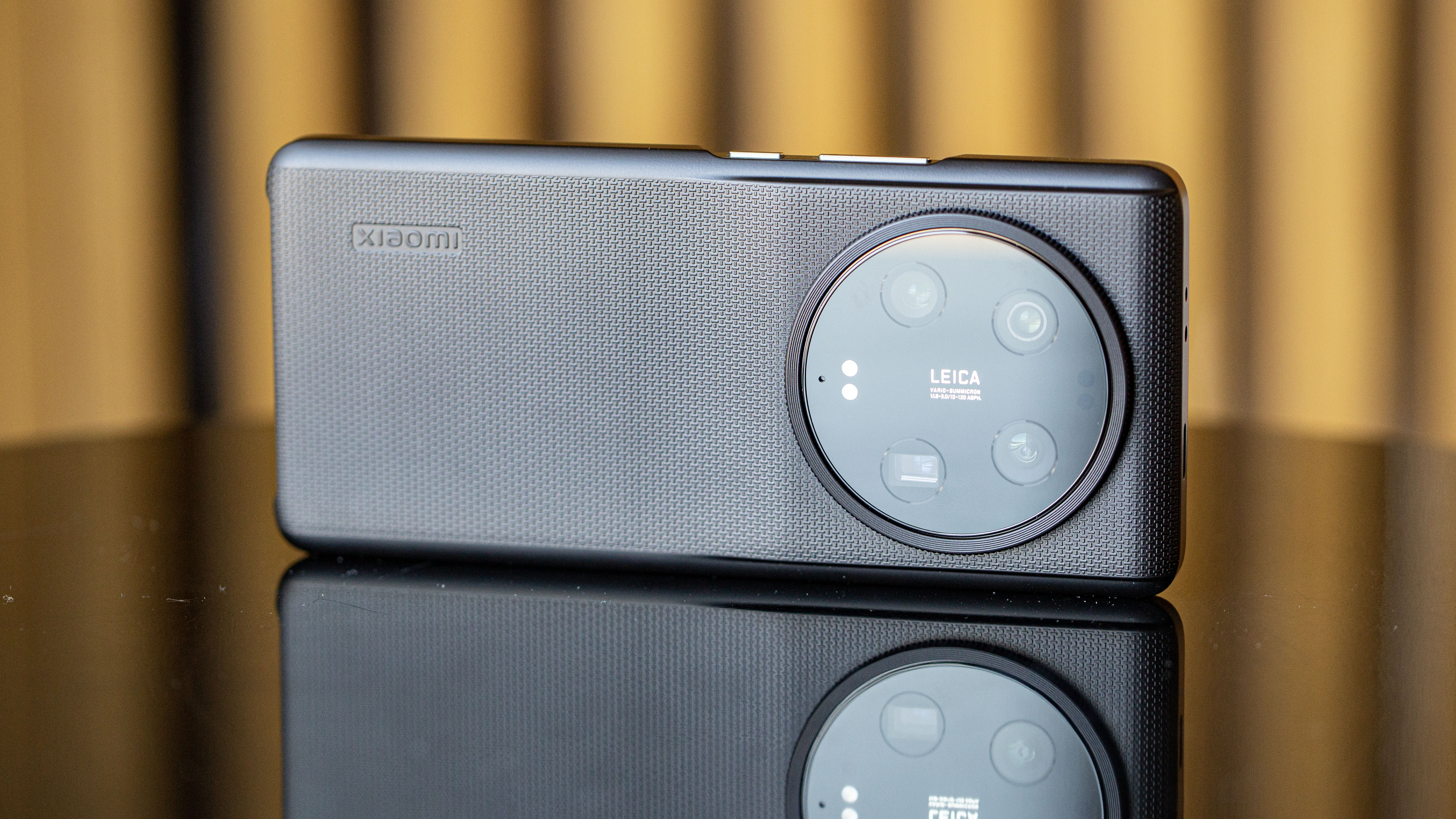
The Xiaomi 13 Ultra is the über-camera smartphone with which the Chinese manufacturer finally wants to rise above its rival Samsung. Particular attention was paid to the camera, which has a unique sensor combination that makes it the best package for 2023, but is it enough? Check our first impressions directly from the launch even in China.
Good
- Incredibly good and flexible camera
- More grown-up, but still bold design
- Great performance with Snapdragon 8 Gen 2
- Finally USB 3.2
- Coming to other markets
Bad
- Bloatware in MIUI 14
- Probably very expensive
Xiaomi 13 Ultra in a nutshell
The Xiaomi 13 Ultra is an all-around excellent smartphone that only has a few weaknesses in the software. In return, the smartphone was built around what is probably the most powerful camera system ever found in a phone.
However, the total package will also have its proud price: The Xiaomi 13 Pro already costs 1,299 Euros in Europe with 256 GB of storage (approx. $1400). Accordingly, you can expect to add at least another 200 to 400 Euros for the Ultra model, especially since Xiaomi will only launch the 13 Ultra with 512 GB of storage in Europe. At least in China, there are also 256 GB and 1 TB options.
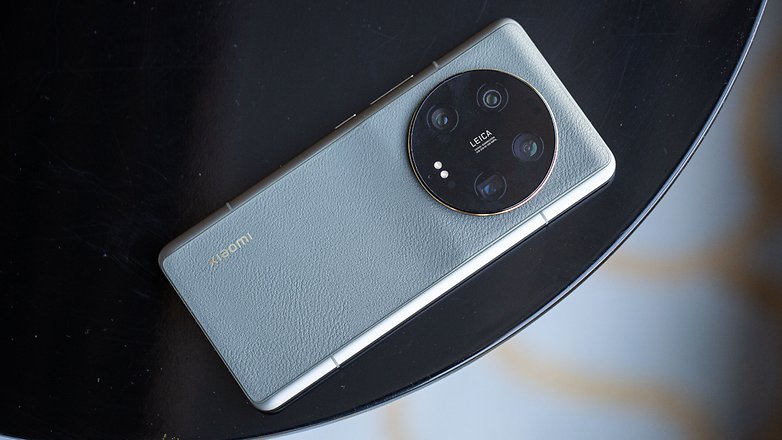
Speaking of which, the Xiaomi 13 Ultra should be available in stores in June. Those who are keen on the camera smartphone should not speculate on falling prices for too long: In all likelihood, there will only be a fairly limited number of units, just like with the Xiaomi 11 Ultra NextPit reviewed two years ago.
A note in advance: This hands-on might be quite detailed, but it is still in development. For example, empirical values for the battery runtime and some benchmarks are still missing. Furthermore, our sample runs the Chinese ROM. Accordingly, the Xiaomi 13 Ultra does not get a final rating at this point. However, we will update this first review continuously.
Xiaomi 13 Ultra design and build quality
The Xiaomi 13 Ultra follows the design of the Xiaomi 12S Ultra with the stylized giant lens on the back, but it looks much more grown-up at the same time. The extreme design is and remains a matter of taste. Clearly positive: Despite the huge camera element on the top, the handling is still good.
Pros:
- Striking, extroverted design.
- High-quality materials and great workmanship.
- Waterproof and dust resistant according to IP68.
Cons:
- No headphone jack or microSD port.
The Xiaomi 13 Ultra takes after its Chinese-exclusive predecessor 12S Ultra in terms of design. You might not even call the huge, circular element—which stretches over half the back and reminds us of a large lens—a camera hump. It seems like a homage to a time when you actually still had to lug around lenses with this diameter. Today, there are four cameras in the black glass element, which we will take a closer look at later.
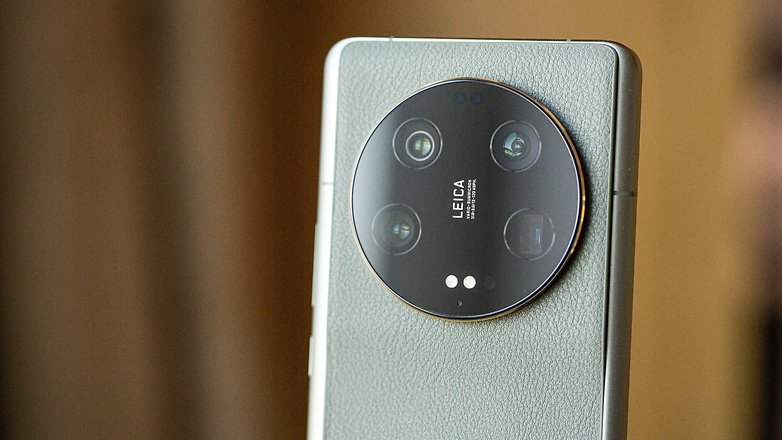
The rest of the back around the camera element is made of Xiaomi’s second-generation vegan leather. The grippy material is even supposed to have an antibacterial effect thanks to nano-coating, and it also feels quite high-quality. The smartphone frame has become wider than in the Xiaomi 12S Ultra. In addition, the entire camera element has moved a bit further down, which means that the Xiaomi 13 Ultra is no longer as top-heavy in the hand as the predecessor.
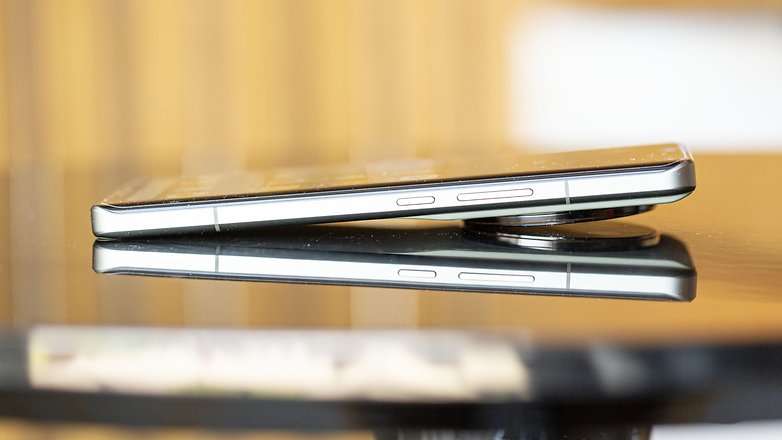
And what else? The smartphone is IP68 certified. Gorilla Glass Victus is used on the front. There is no longer a jack on the casing, and the dual-SIM slot is really only for SIM cards. With 512 GB of UFS 4.0 storage, you should not miss a microSD port anyway.
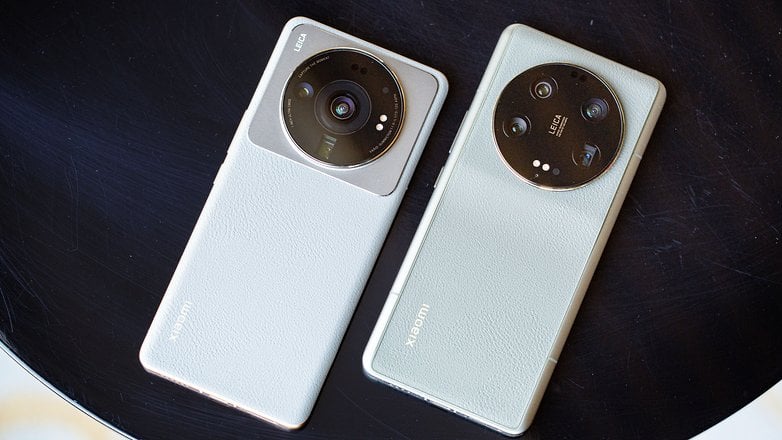
Xiaomi 13 Ultra display
The Xiaomi 13 Ultra has a display on the same level as any other flagship phone. The panel is extremely fast and extremely bright—and it is simply fun with the balanced display. Only the rounded edges on the left and right of the screen are a matter of taste. But you can’t please everyone.
Pros:
- Spectacular LTPO display with 1 to 120 Hz.
- Extremely bright with a maximum of 2,600 nits (typical: up to 1,300 Hz).
Cons:
The 6.73-inch OLED panel offers a resolution of 1,440 x 3,200 pixels and looks simply stunning. That starts with the animations, which look extremely smooth thanks to the 120 Hz panel. The battery also gets some advantages with the LTPO 2.0 technology, which dynamically reduces the display rendering rate down to 1 Hz to save power. Thanks to 1920 Hz PWM dimming, the display should always be flicker-free. And speaking of frequencies: The digitizer is capable of 240 Hz.

The color reproduction is also successful and convinces with intense, but not disturbingly gaudy colors. The consistency over different ambient light conditions is also pleasing here. From a dark room to the blazing sun, the panel is always excellently legible, thanks to a maximum brightness of 1300 nits. In direct sunlight, even 2,600 nits are possible.
In the settings, you will find numerous options to adjust the display to your liking, ranging from the upscaler for video content to the color style and color space used.
Xiaomi 13 Ultra software
The Xiaomi 13 Ultra runs MIUI 14—that is, Android 13. The update to Android 14, which will probably still be called MIUI 14, will probably be available in fall. This banal point also stands for the probably only weakness of the Xiaomi 13 Ultra: The software is simply not quite perfect.
We have already reported in detail about MIUI 14 in connection with our review of the Xiaomi 13 Pro and review of the Xiaomi 13. You can also find a first review of MIUI 14 on NextPit, so I would like to keep the software part really short here and refer you to the previously linked articles for the feature set and countless screenshots.
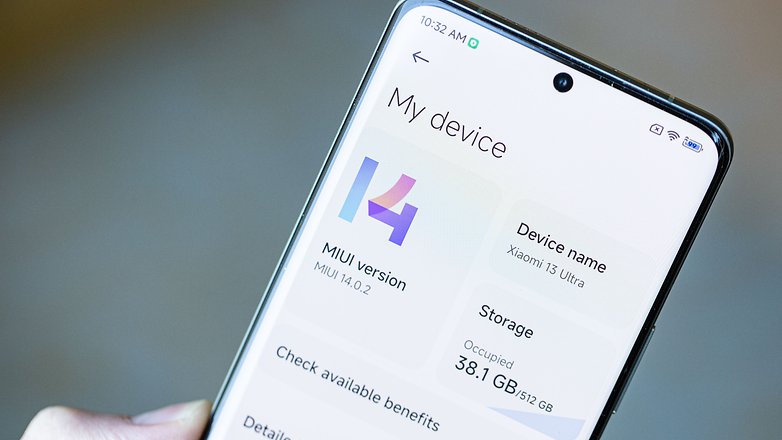
How long the Xiaomi 13 Ultra will get updates is currently unknown—but presumably, Xiaomi will follow the 13 series here. On the other hand, MIUI will probably also include some bloatware on the Ultra model.
Otherwise, MIUI 14 is basically fun. The interface is colorful and offers numerous options for customization. There are small but nice features that make life easier everywhere; for example, extracting text from photos. Sure, Apple, Samsung & Co. also offer that—but Xiaomi largely stays on the ball. Nevertheless, it is noticeable in a direct comparison that MIUI simply does not have quite the same polish as Android in Samsung or Google, or iOS in the iPhones.
Xiaomi 13 Ultra performance
The Xiaomi 13 Ultra is equipped with the latest Qualcomm Snapdragon 8 Gen 2, 16 GB of RAM and 512 GB of flash storage in the EU version. The former is LPDDR5X RAM in any case, the latter UFS 4.0. Like the vanilla and Pro models, the Xiaomi 13 Ultra also convinces in terms of performance.
Pros:
- Powerful Qualcomm Snapdragon 8 Gen 2.
- Finally with USB 3.2.
Cons:
No question: the Xiaomi 13 Ultra offers plenty of performance and, with the Qualcomm Snapdragon 8 Gen 2, is on the same level as practically all other Android flagships in 2023. We will update the pre-release test of the Xiaomi 13 Ultra with benchmark results soon.
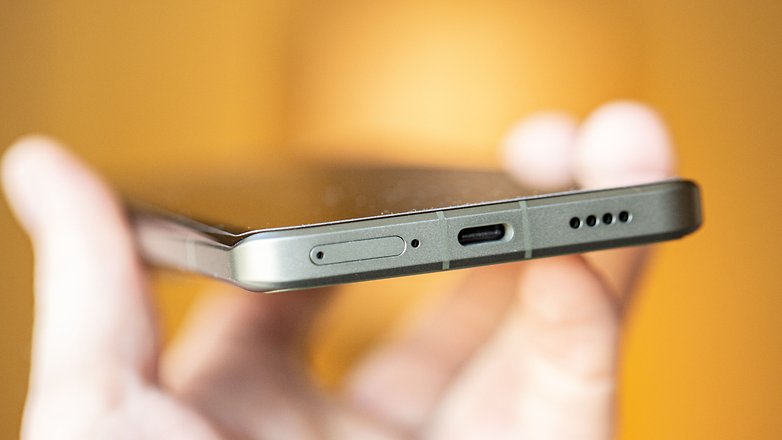
There’s still good news about the USB port—finally. Xiaomi is switching to USB 3.2, which means data rates of up to 5 GBit/s. This is not only long overdue but also bitterly necessary because of the camera. But more about that later.
Xiaomi 13 Ultra camera
It is rare that a camera system in a smartphone looks like it was designed on the drawing board—more or less what Sony introduced as a
multi-camera collaboration system some time ago. That is the case in the Xiaomi 13 Ultra: The manufacturer relies on the 1-inch Sony IMX989, which we already know from the Xiaomi 12S Ultra, but this time with a variable aperture. In addition, the 1/2.51-inch IMX858, which impressed Camila in her
review of the Honor Magic 5 Pro, is used three times.
Pros:
- Fantastic 1-inch sensor with variable iris aperture.
- Three equally capable cameras for ultra-wide, 3x telephoto, and 5x telephoto.
- 8K video with all cameras, seamless zoom with 4K recording.
Cons:
Xiaomi has developed the camera of the 13 Ultra in close collaboration with Leica. The lens manufacturer helped with the optics on the one hand, but also with the image processing on the other. You can basically choose between two Leica modes: Leica Authentic and Leica Vibrant. But does that work?
Main camera with variable aperture
Let’s start with the main camera: When it comes to image quality, the 1-inch IMX989 delivers mercilessly. However, anything else would have been a surprise after the performance of the Xiaomi 12S Ultra, which also completely convinced you in our camera blind test at the end of 2022.
The photos in daylight look great and impress with a great dynamic range and crisp sharpness without ever looking overdrawn. Even with strong contrasts, the pictures remain natural and free of HDR artifacts like ghost edges or flat blacks. This is really fun.
The variable aperture also helps here, reliably stopping the lens down to F4.0 in automatic mode to improve imaging performance and increase the depth of field. By the way, you do not have to worry about bokeh effects in portraits—Xiaomi calculates them better via software than it would be optically possible with this small lens.
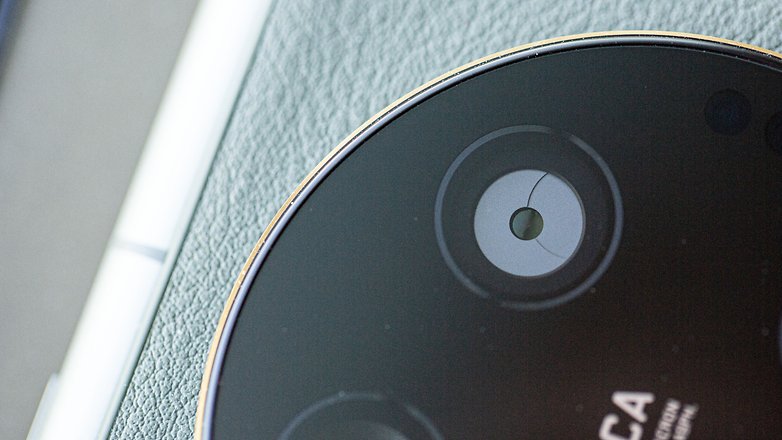
In lower light conditions, Xiaomi then turns up the heat, namely the aperture. With F1.9, a good four times more light reaches the sensor than with F4.0. With the 1-inch chip and the improved algorithms compared to the 12S Ultra, Xiaomi still conjures up impressive results even in very low light conditions that make even the big competitor from South Korea jealous.
Ultra-wide angle and twice telephoto: Three IMX858 for one Hallelujah
Compared to the 12S Ultra, Xiaomi doubles the number of telephoto cameras on the 13 Ultra. The two lenses now offer magnifications of 3x and 5x. With 50 megapixels per sensor, you thus always have a “real resolution” of at least 12 megapixels as a basis for your photos when zooming in whole numbers up to 6x.
In practice, the flexible telescope system is fun. The installed Sony sensors are decent sized at 1/2.51 inch. During the day, both telephoto cameras deliver colorful and razor-sharp photos that almost perfectly match the results of the main camera in terms of coloring and style.
In low-light conditions, even the 3x lens still does an amazingly good job thanks to the fast F1.8 optics. Whether your subjects are illuminated by tungsten, twilight, or fluorescent lighting: The pictures still turn out very well. But clearly: The darker the scene, the bigger the difference to the main camera. No wonder, the 1-inch sensor offers about four to five times more surface than the IMX858—and also an image stabilizer.
The situation is quite similar with the 5x telephoto. In daylight, the 50-megapixel camera shoots razor-sharp, natural and precisely exposed photos. The darker it gets, the more the aperture of F3.0 installed here becomes noticeable. Compared to F1.8, F3.0 means 3.5 times less light on the sensor and correspondingly poorer image quality.
Finally, the ultra-wide-angle camera again offers an aperture ratio of F1.8 and thus practically identical image quality to the 3x telephoto. What we like here is the extremely wide angle of view with a 12 mm equivalent focal length, which really deserves the predicate: “panorama suitable”.
In low light conditions, the image quality is even a tad better than with the 3x telephoto. The ultra-wide angle is less sensitive to camera shake and thus allows longer shutter speeds—even the optical image stabilizer in the telephoto lenses can’t compensate for that.
Xiaomi still has a whole stack of software tricks ready for its various cameras. Of course, the obligatory portrait mode with background blur is on board, which offers various focal lengths with different bokeh effects. In addition, there’s a particularly fast sports mode as well as the option to take 14-bit RAW photos (“Ultra-RAW”).
Video: 8K across all cameras
Last but not least, there is the topic of video. The Xiaomi 13 Ultra can record completely unnecessary 8K resolution across all cameras. But: due to the densely staggered focal lengths and the excellently matched lenses, here’s a 4K camera with a truly seamless and virtually lossless 10x zoom. The video quality is excellent and decreases in quality over the different focal lengths and different lighting conditions in a similar way as described above for photography.
In terms of codecs, there’s a choice of H.264 or H.265 in 8-bit and 4:2:0 color subsampling—and for demanding users, 10-bit LOG as well as a mode that even lets you set up a multi-camera setup as a director. However, 8-bit video should suffice for at least 99% of the purposes. With the great picture quality, you really have all options for great videos.
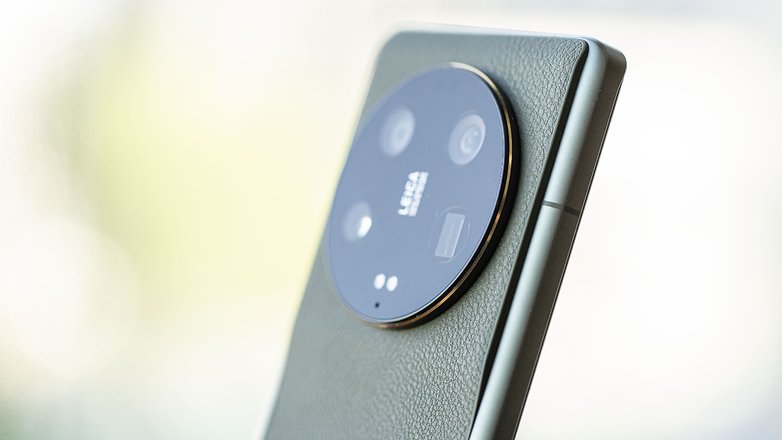
The bottom line is that the Xiaomi 13 Ultra thus offers a camera system that is really like a one-stop shop when it comes to hardware and software, and it is all-around fun. Yes, Samsung remains the zoom leader on paper with the S23 Ultra and 10x optical zoom, but Xiaomi offers a more coherent overall concept and all-around better image quality with a smaller gap in the overall focal length range.
Xiaomi 13 Ultra battery
The Xiaomi 13 Ultra offers a 5000 mAh battery and is thus initially similar to the competition. Charging is also quite fast with 90 W via cable and 50 W wirelessly. We cannot make any statements about the battery life yet.
Pros:
- Quick charging with 90 W.
- Wireless charging with 50 W.
Cons:
- Does not support fast PowerDelivery via USB 3.2.
The Xiaomi 13 Ultra fills up its 5,000 mAh strong battery with up to 90 W. This works with a special Xiaomi power adapter, which is fortunately included in the box. Wireless charging works with 50 W, and wireless reverse charging is also on board.
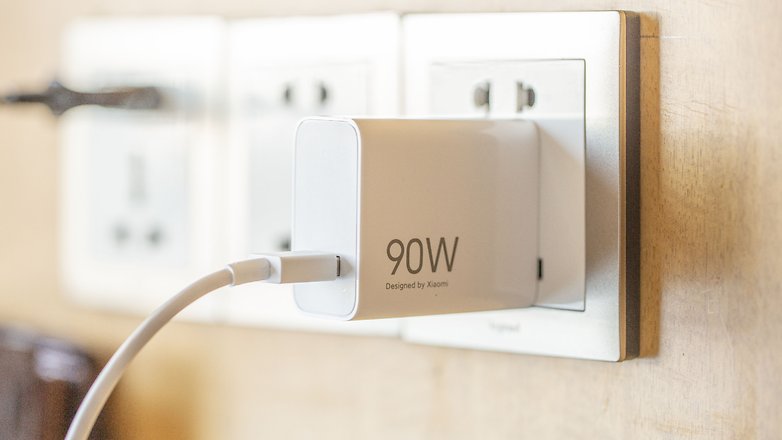
So far, we have had the Xiaomi 13 Ultra in continuous use and thus have not yet had time for a meaningful battery benchmark. However, we will make up for that in the next few days and update the review here.
Xiaomi 13 Ultra technical specifications
| 2023 flagship | |
|---|---|
| Product | |
| Picture |
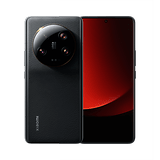 |
| Display | 6,73-inch OLED 3,200 x 1.440 Pixel 1-120 Hertz variable refresh rate |
| CPU | Snapdragon 8 Gen 2 |
| Memory | 12 / 16 GB LPDDR5X RAM 256 / 512 GB / 1 TB UFS 4.0 ROM |
| Software | Android 13 + MIUI 14 |
| Camera | Main: 50 MP, f/1.9, 1 Zoll Sony IMX989, OIS Ultra-wide-angle: 50 MP, f/1.8, Sony IMX858 3.2x telephoto: 50 MP, f/1.8, OIS, Sony IMX858 5x telephoto: 50 MP, f/3.0, OIS, Sony IMX858 |
| Selfie | 32 MP, f/2.0 |
| Battery | 5,000 mAh 90 Watts wired charging 50 Watts wireless charging 10 Watts reverse charging |
| Connectivity | 5G, LTE, Wi-Fi 6, Wi-Fi Direct (2,4 GHz + 5 GHz), Bluetooth 5.3, NFC |
| IP certification | IP68 |
| Colors | Black, Olive Green (China-only: White) |
| Dimensions | 163.18 x 74.64 x 9.06 mm 227 g |
Early Verdict
The Xiaomi 13 Ultra is of course a great smartphone. It currently has the strongest processor available for Android smartphones. The battery charges faster than all other flagships, and the display is simply huge fun. The eye-catching design might be a matter of taste, but the materials are high-quality and the build is very good. The software is not quite on par with the best rivals yet, but Xiaomi has quickly caught up in terms of update policy.
Then there is the camera, which is much more than just a few sensors nailed together without any concern. The camera follows a strict concept and is more sophisticated than in almost any other Android smartphone. Currently, only the Honor Magic 5 Pro and the iPhone series can keep up, but they both offer less variety—and also have to take a back seat in terms of picture quality according to this early hands-on.
Xiaomi 13 Ultra
To device database






